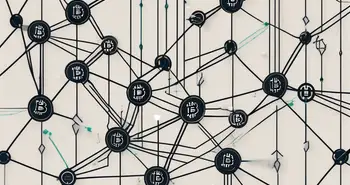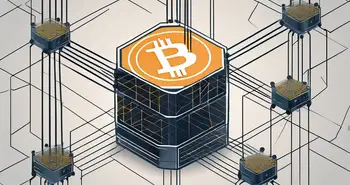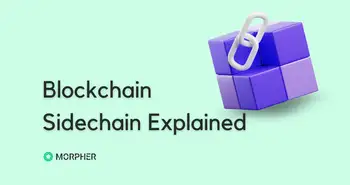The Practical Guide to Bitcoin Block Size

As an expert in the field of Bitcoin, I am here to provide you with the ultimate guide to understanding Bitcoin block size. In this comprehensive article, we will delve into the concept of block size, its role in Bitcoin transactions, the history of block size limits, debates surrounding its expansion, the technical aspects, and even speculate about the future of Bitcoin block size. So let's get started!
Understanding the Concept of Bitcoin Block Size
Bitcoin block size refers to the maximum amount of data that can be stored in each block of the blockchain. It plays a crucial role in determining the number of transactions that can be processed within a given period. The larger the block size, the more transactions can be included, potentially increasing the network's capacity and scalability.
The Role of Block Size in Bitcoin Transactions
Block size directly impacts the number of transactions that can be confirmed and added to the blockchain at any given time. With a larger block size, more transactions can be processed simultaneously, leading to faster and more efficient transactions. However, there are trade-offs to consider, such as the potential centralization of the network, as larger blocks require more storage and bandwidth.
How Block Size Affects Transaction Speed
Block size has a significant impact on transaction speed. When the block size is small and the number of transactions is high, there can be congestion in the network, resulting in slower confirmation times and increased transaction fees. Increasing the block size can help alleviate congestion, but it must be done carefully to maintain network stability and decentralization.
The History of Bitcoin Block Size
The original Bitcoin block size limit was set at 1MB by the cryptocurrency's mysterious creator, Satoshi Nakamoto. This limit was implemented to prevent spam attacks and ensure the network's stability during its early days. Over time, as the popularity of Bitcoin grew and more transactions were being processed, debates arose around the need to increase the block size limit.
The Original Block Size Limit
As mentioned earlier, the original block size limit was set at 1MB. This limit was deemed sufficient during Bitcoin's early years when transaction volumes were relatively low. However, as Bitcoin gained popularity and adoption increased, the block size limit became a contentious issue, leading to debates within the community.
Notable Changes in Block Size Over Time
As the scalability concerns surrounding Bitcoin's block size mount, several notable changes have been made. One such change was the introduction of Segregated Witness (SegWit) in 2017, which enabled more transactions to be included in a block by segregating the transaction signature data. This effectively increased the effective block size without actually changing the base block size limit.
Debates Surrounding Bitcoin Block Size
The topic of Bitcoin block size has sparked heated debates among experts, developers, and the broader cryptocurrency community. Let's take a closer look at the pros and cons of increasing block size and discuss its impact on decentralization.
Pros and Cons of Increasing Block Size
Advocates of increasing the block size argue that it would lead to faster and cheaper transactions, improving Bitcoin's overall usability. On the other hand, opponents worry that larger block sizes could lead to centralization, as only miners with significant resources would be able to handle the increased data storage and bandwidth requirements.
Impact of Block Size on Decentralization
Decentralization is a fundamental principle of Bitcoin and other cryptocurrencies. Some experts argue that increasing the block size could threaten this decentralization by creating barriers to entry for smaller miners and nodes, making the network more reliant on a few powerful players. Finding a balance between scalability and decentralization is the ongoing challenge Bitcoin faces.
Technical Aspects of Bitcoin Block Size
Understanding the technical aspects of Bitcoin block size is crucial to grasp the full picture. Let's explore how block size influences mining and the relationship between block size and transaction fees.
How Block Size Influences Mining
Mining is the process of adding transactions to the blockchain. Miners compete to solve complex mathematical puzzles and are rewarded with newly minted Bitcoins. The block size directly affects the mining ecosystem, as larger block sizes require more computational power and resources. Miners must weigh the costs and benefits of including more transactions in a block.
The Relationship Between Block Size and Fees
Transaction fees in the Bitcoin network are determined by the supply and demand dynamics. When the blocks are full, users compete to have their transactions included, leading to higher fees. Increasing the block size can alleviate congestion, reducing fees in times of high demand. However, this must be done carefully to avoid potential centralization issues.
Future of Bitcoin Block Size
The future of Bitcoin block size is an intriguing aspect to consider. Let's explore predictions for block size changes and how scalability solutions may affect the block size in the long run.
Predictions for Block Size Changes
While there is no crystal ball to predict the exact future of Bitcoin's block size, many experts believe that a careful and gradual increase may be necessary to accommodate growing demand. However, finding consensus on the specific block size parameters remains a challenge.
How Scalability Solutions May Affect Block Size
Scalability solutions such as the Lightning Network aim to address Bitcoin's scalability limitations without directly increasing the block size. These solutions introduce off-chain protocols that allow for faster and cheaper transactions while minimizing the strain on the main blockchain. As these solutions mature, they may influence the need for further block size adjustments.
It is important to stay updated on the latest developments and discussions surrounding Bitcoin block size. Personally, I recommend actively participating in community forums and following reputable sources to stay informed. As an expert, I have witnessed the evolution of Bitcoin's block size and have seen firsthand how it has impacted the cryptocurrency landscape.
My advice to fellow enthusiasts is to consider the trade-offs involved and keep in mind the long-term sustainability and decentralization of the network. Understanding the technical aspects and the implications of block size changes will enable you to navigate the exciting world of Bitcoin more confidently.
Frequently Asked Questions
Q: What is Bitcoin block size?
Bitcoin block size refers to the maximum amount of data that can be stored in each block of the blockchain. It determines the number of transactions that can be processed and confirmed within a given period.
Q: How does block size affect transaction speed?
Block size directly impacts transaction speed. Larger block sizes can accommodate more transactions, resulting in faster confirmation times. However, smaller block sizes can lead to congestion and slower transactions.
Q: How has the Bitcoin block size evolved over time?
The original block size limit was set at 1MB. Over time, debates and discussions have taken place regarding the need to increase the limit. Changes such as the introduction of Segregated Witness have enabled more transactions to be included in a block indirectly.
Q: What are the debates surrounding Bitcoin block size?
Debates regarding the Bitcoin block size revolve around the pros and cons of increasing it. While larger block sizes can improve transaction speed, there are concerns about centralization and the impact on network decentralization.
Q: How does block size affect mining and transaction fees?
Block size influences the mining ecosystem as larger blocks require more computational power. When blocks are full, transaction fees tend to increase due to competition. Increasing block size can alleviate congestion and potentially reduce fees in times of high demand.
Q: What does the future hold for Bitcoin block size?
The future of Bitcoin's block size remains uncertain. Predictions vary, but many experts believe that a cautious increase may be necessary. Scalability solutions such as the Lightning Network may also play a role in shaping the future by reducing the strain on the main blockchain.
By being aware of these frequently asked questions, you will be better equipped to navigate the intricacies of Bitcoin block size debates and developments.
There you have it, the ultimate guide to Bitcoin block size. I hope this article has provided you with valuable insights into this essential aspect of the Bitcoin ecosystem. Stay curious, stay informed, and continue exploring the world of cryptocurrencies!
As you continue to explore the dynamic world of Bitcoin and its evolving block size, consider the innovative trading opportunities that await you on Morpher. With Morpher's groundbreaking platform, you can seamlessly trade Bitcoin and a wide array of other assets with zero fees, infinite liquidity, and up to 10x leverage. Embrace the future of investing with fractional shares, the ability to short sell without interest fees, and the security of a non-custodial wallet. Ready to transform your trading experience? Sign Up and Get Your Free Sign Up Bonus at Morpher.com today and join the revolution of blockchain-based investing.

Disclaimer: All investments involve risk, and the past performance of a security, industry, sector, market, financial product, trading strategy, or individual’s trading does not guarantee future results or returns. Investors are fully responsible for any investment decisions they make. Such decisions should be based solely on an evaluation of their financial circumstances, investment objectives, risk tolerance, and liquidity needs. This post does not constitute investment advice.

Painless trading for everyone
Hundreds of markets all in one place - Apple, Bitcoin, Gold, Watches, NFTs, Sneakers and so much more.

Painless trading for everyone
Hundreds of markets all in one place - Apple, Bitcoin, Gold, Watches, NFTs, Sneakers and so much more.









